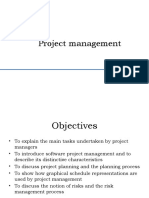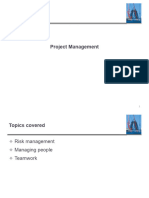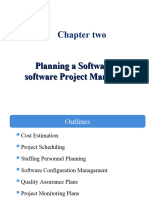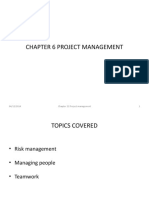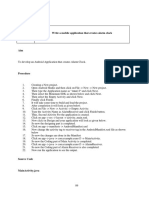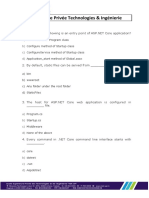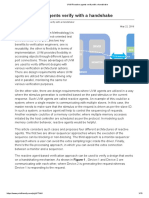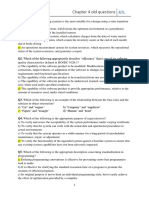0% found this document useful (0 votes)
40 views15 pagesSoftware Project Management
This presentation discusses software project management. It explains that software project management is concerned with delivering software on time, within budget, and according to requirements. It also discusses distinguishing factors of software projects, common management activities like planning and scheduling, and challenges like risk management. The key points are that good project management is essential for success, planning and estimating are iterative processes, and risk management aims to identify and mitigate risks that could threaten the project.
Uploaded by
Anjar AkramCopyright
© © All Rights Reserved
We take content rights seriously. If you suspect this is your content, claim it here.
Available Formats
Download as PPT, PDF, TXT or read online on Scribd
0% found this document useful (0 votes)
40 views15 pagesSoftware Project Management
This presentation discusses software project management. It explains that software project management is concerned with delivering software on time, within budget, and according to requirements. It also discusses distinguishing factors of software projects, common management activities like planning and scheduling, and challenges like risk management. The key points are that good project management is essential for success, planning and estimating are iterative processes, and risk management aims to identify and mitigate risks that could threaten the project.
Uploaded by
Anjar AkramCopyright
© © All Rights Reserved
We take content rights seriously. If you suspect this is your content, claim it here.
Available Formats
Download as PPT, PDF, TXT or read online on Scribd
/ 15



